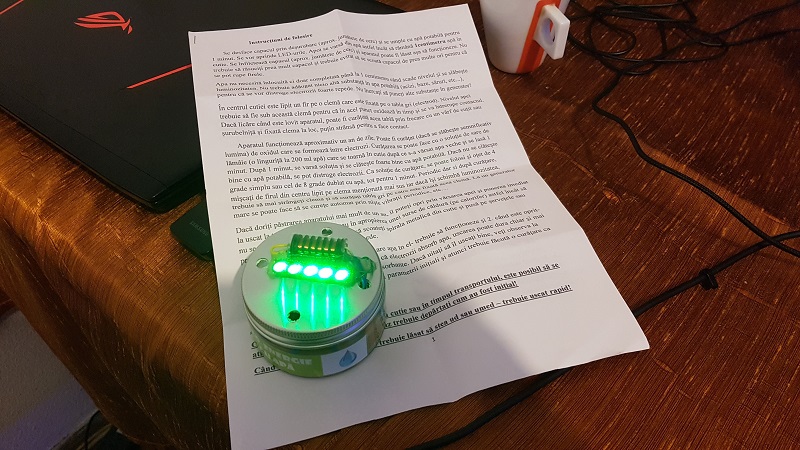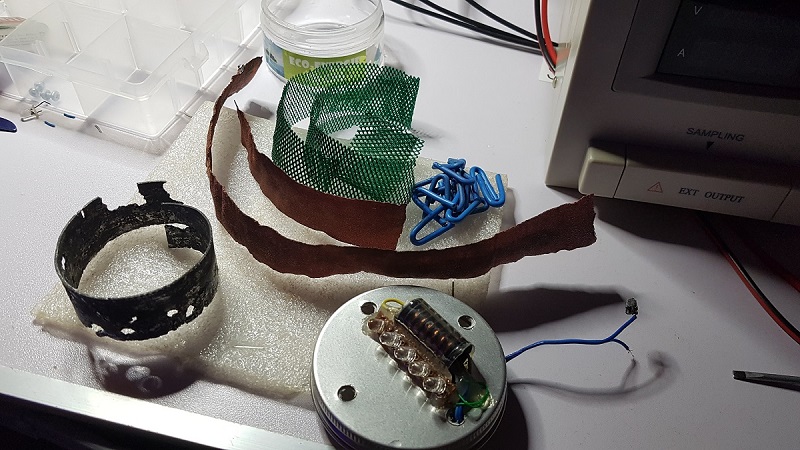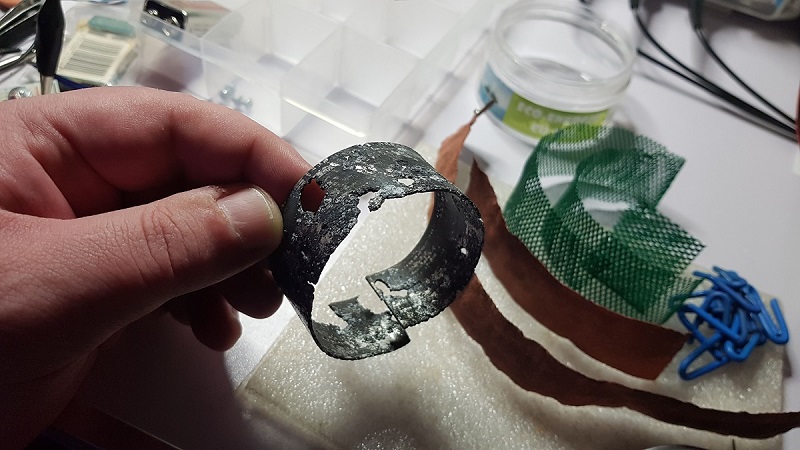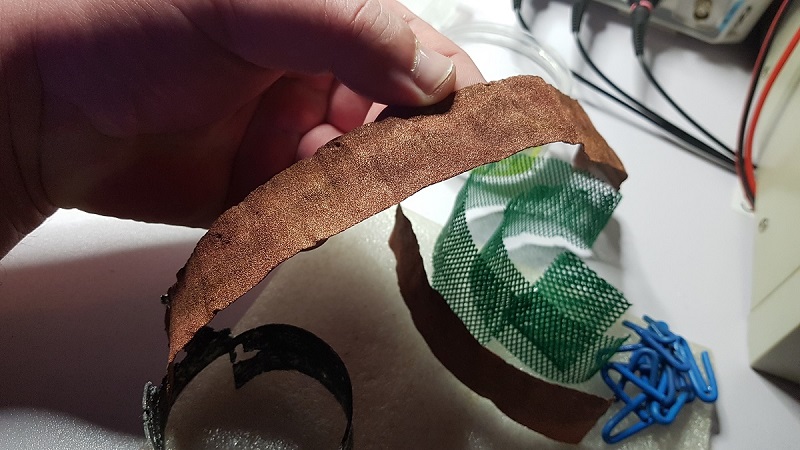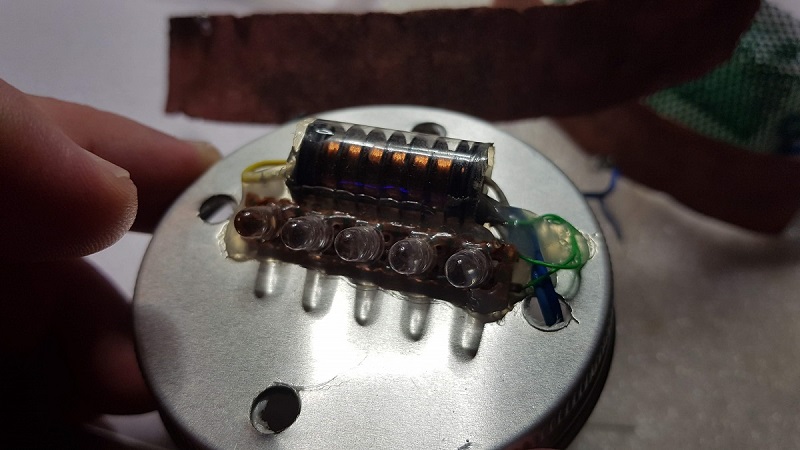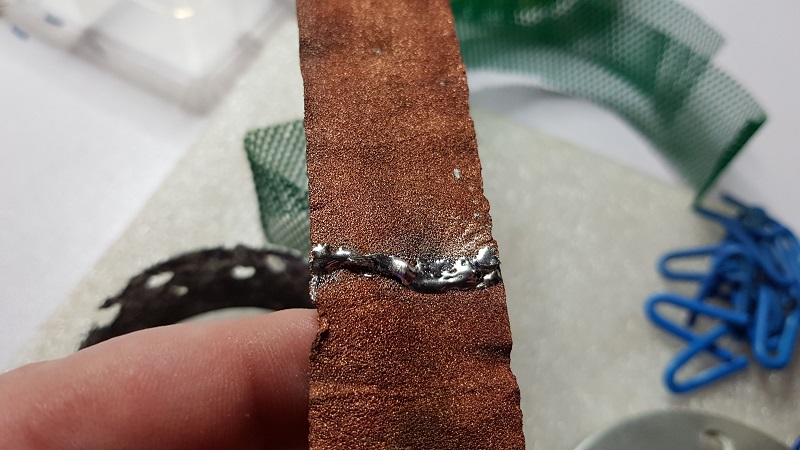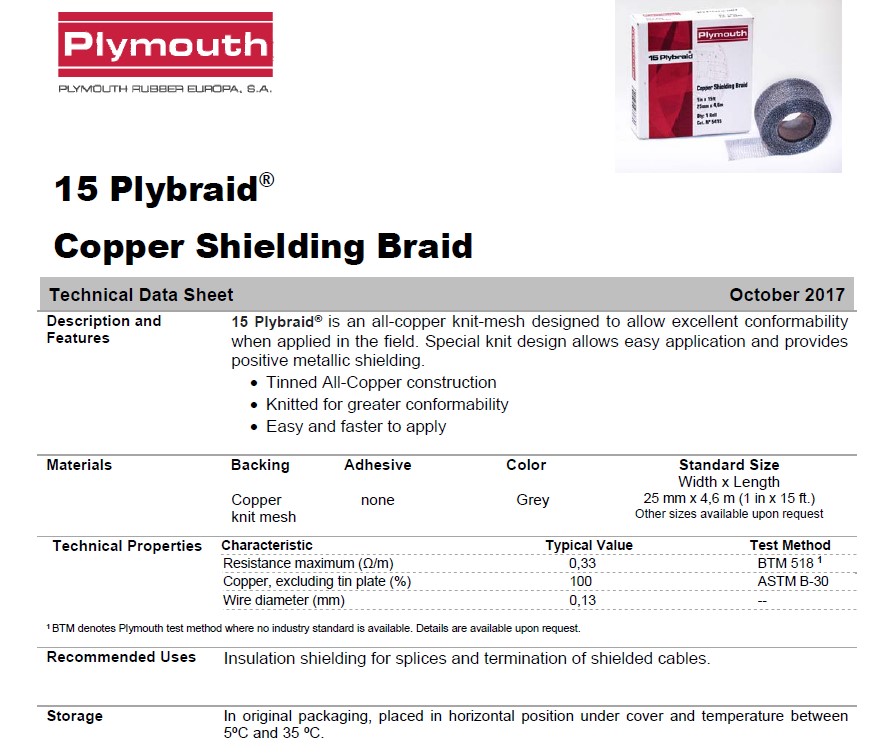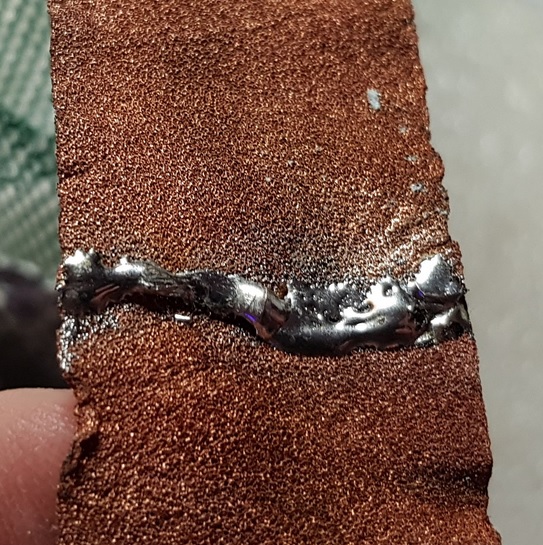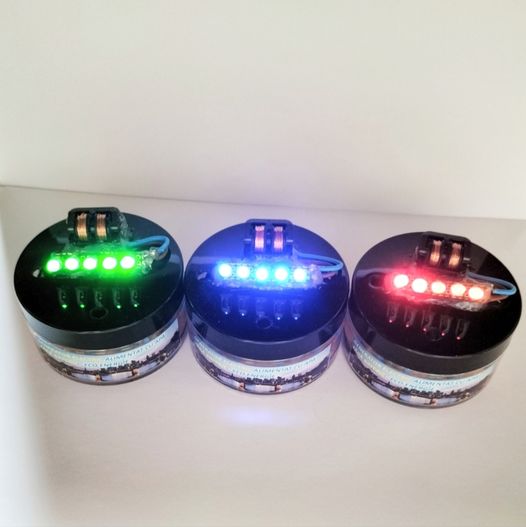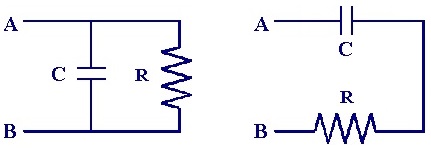As I promised I've made the measurements but I'm not very satisfied on how they worked.
The device is very sensitive to measurement tools, it changes its functionality when they are connected to it.
This is the voltage provided by the primary module/source without having the secondary module conected:
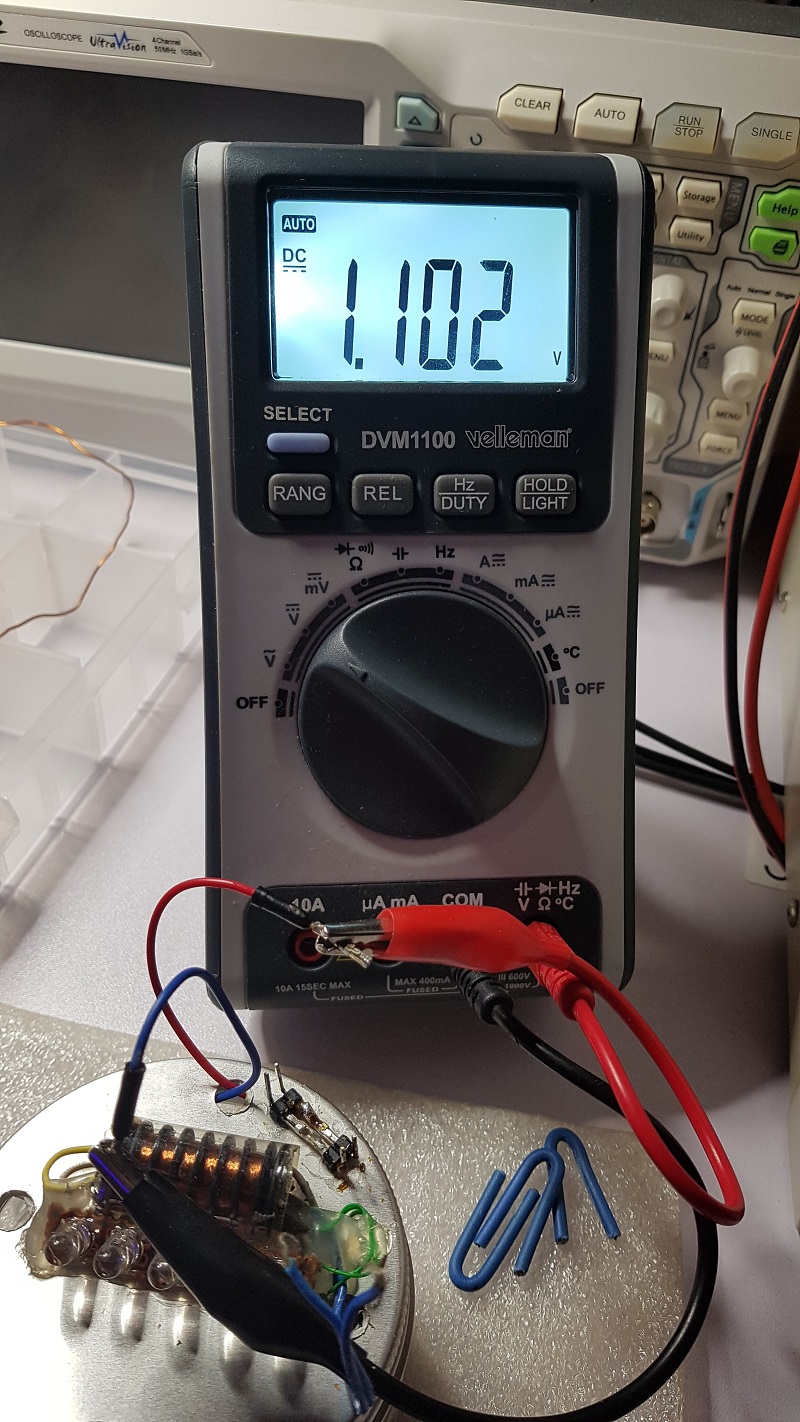
Then I connected the secondary module but when I use the multimeter the LEDs light is diminishing to almost not being visible.
I don't know what's causing this but I continued making the measurements in these conditions.
This is the voltage I measured between the primary module and secondary module when they're connected:
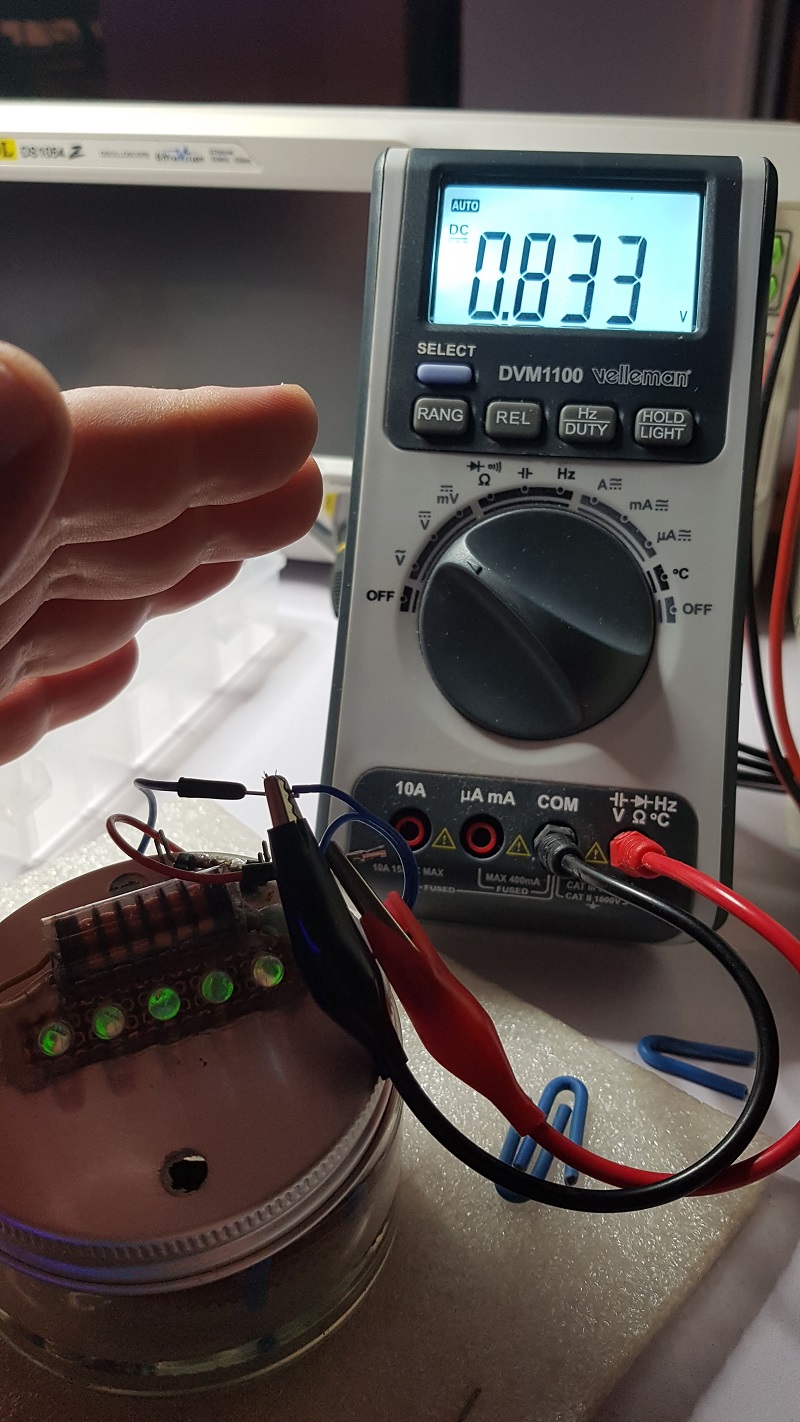
You can see how weak the LEDs are when connecting the multimeter.
And this is the current I measured between the primary module and the secondary module when they're connected:
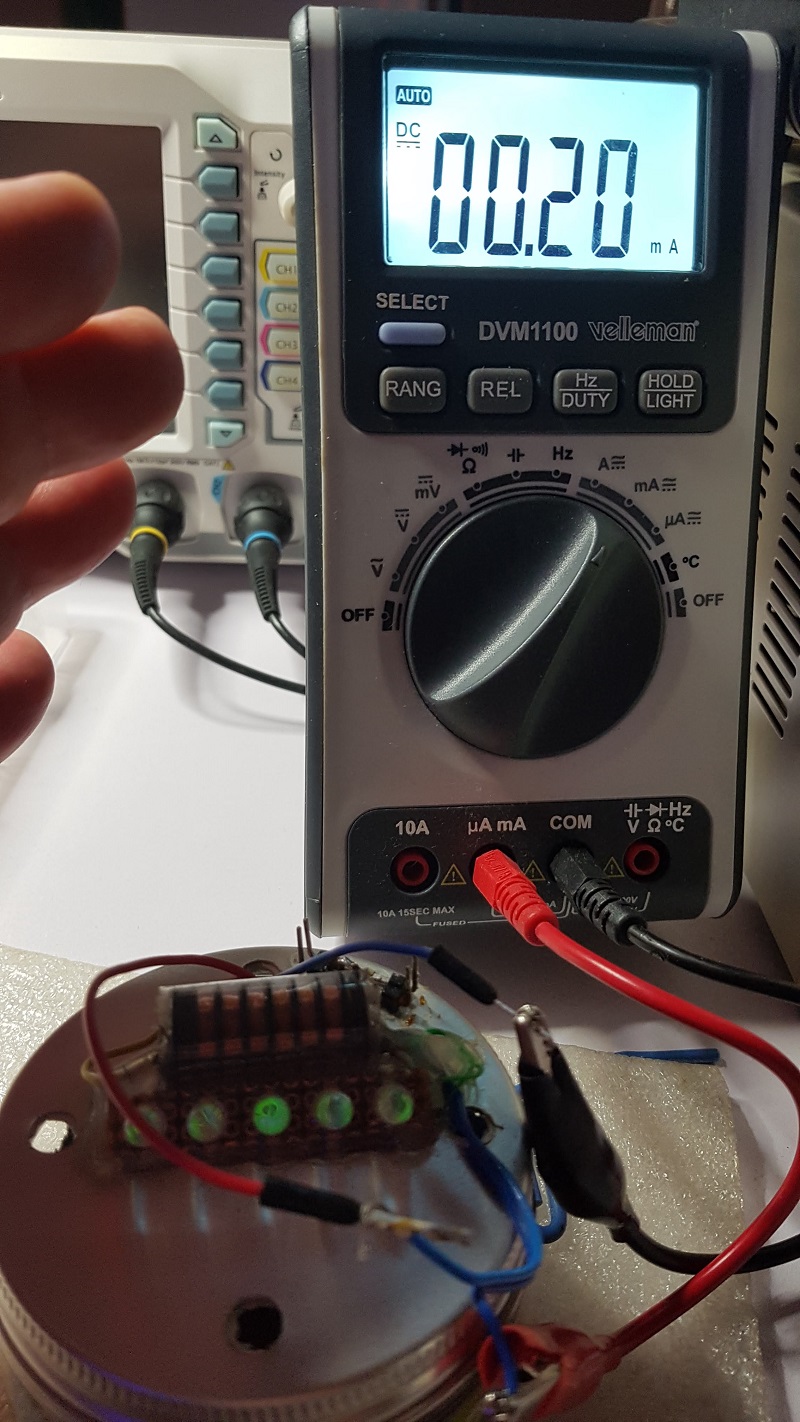
I'm not sure how accurent the measurements are when the LED's light is not as powerful as usually.
I also tried to get the waveform received by the LEDs from the Joule-Thief module but when I put the oscilloscope's probes on their connections the LEDs are turning off completely and there is no waveform read by oscilloscope.
I'm not sure why the device is behaving like this when measurement tools are connected to it.
I know all measurement tools are using a shunt resistor (or more) for reading, could it be the cause for how the device is behaving when measurement tools are connected to it ?
For now this is as much as I could do in making measurements on this device and presenting them here as I promised.
Regards,
Fighter
| "If you want to find the secrets of the universe, think in terms of
energy, frequency and
vibration." |
|
|
Nikola Tesla |
